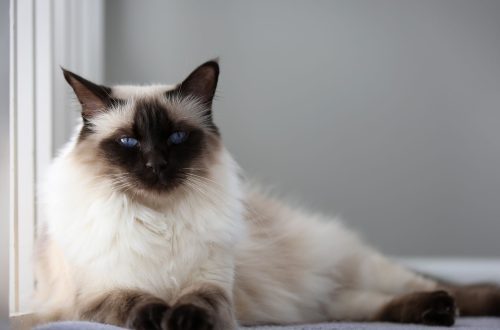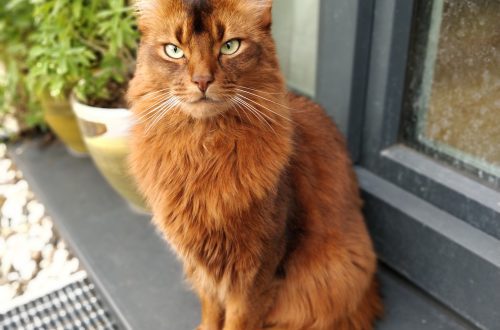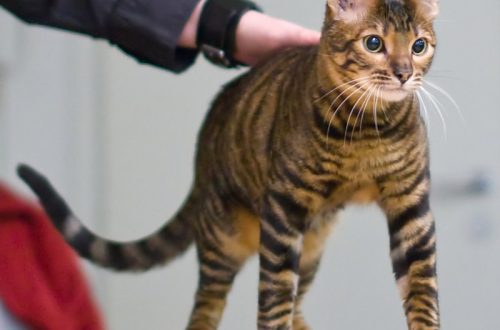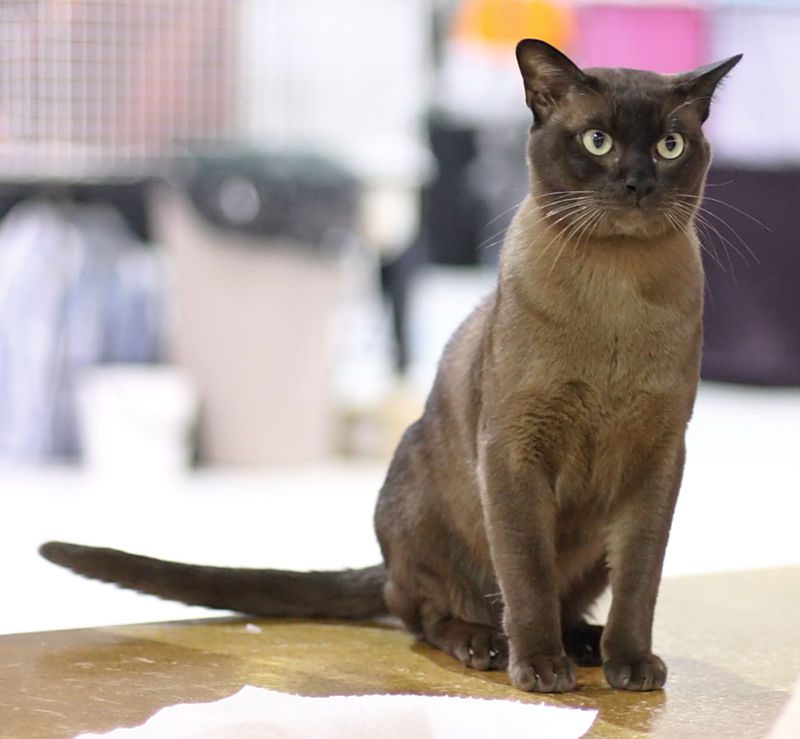
Birman cat
Other names: Sacred Birmese , Birman
Birman cat cats are distinguished by excellent health and friendly disposition, have a quiet and melodic voice. Representatives of this breed do not give the owners much trouble.
Contents
- Characteristics of Birman cat
- Basic moments
- History of the Birman cat breed
- Video: Birman cat
- Appearance of the Birman cat
- Photo of Birman cats
- The nature of Birman cats
- Birman cat Care and maintenance
- Feeding
- Health and disease of the Birman cat
- How to choose a Birman cat kitten
- Photo of Birman kittens
- How much is a Birman cat
Characteristics of Birman cat
| Country of origin | Birma |
| Wool type | Longhair |
| Height | up to 30 cm |
| Weight | 3–6 kg |
| Age | 12–14 years old |
Basic moments
- Birman cat is a medium sized cat. At the same time, it looks massive, even majestic. The Birman cat cat is proportionately built, it is a physically strong animal.
- The character of the cat is quite calm, even balanced, that is, you cannot call it too passive or too stormy.
- Differs in playfulness, friendliness, tenderness. These communicative qualities are more represented in cats.
- Relations with other pets, whether dogs or cats of other breeds, are the most peaceful – Birma easily finds a common language with everyone. However, they can be jealous of their owner.
- The cat quickly finds contact with children, becomes attached to the younger members of the family, communicates and plays with them with pleasure.
- It is distinguished by extreme curiosity, literally sticks its nose everywhere. At the same time, she is too persistent to the point of obsession, knows how to get what she wants from the owners.
- The Birman cat is a self-sufficient animal with strong energy, a great hunter. Loneliness and an indifferent attitude towards oneself are very painful.
- A distinctive feature of the breed is the color that changes with age. Small kittens are snow-white in color, but as they grow older, color-points appear, white spots on their paws. The color is finally formed no earlier than one and a half years.
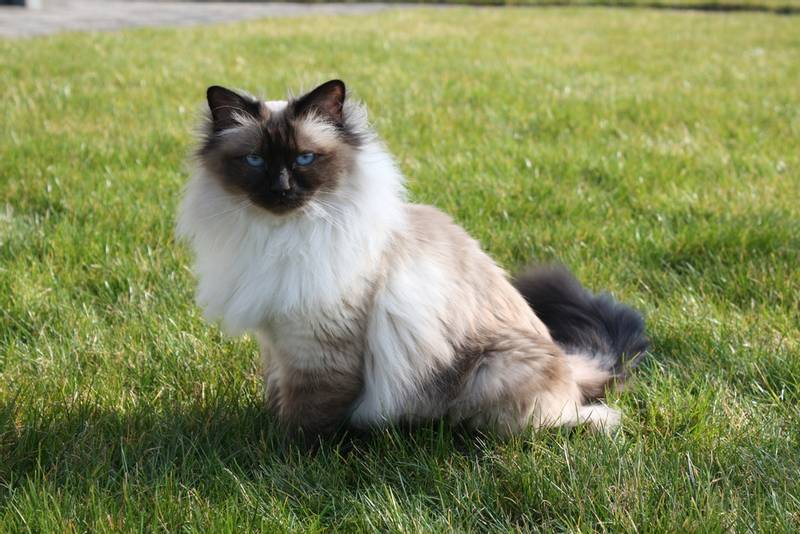
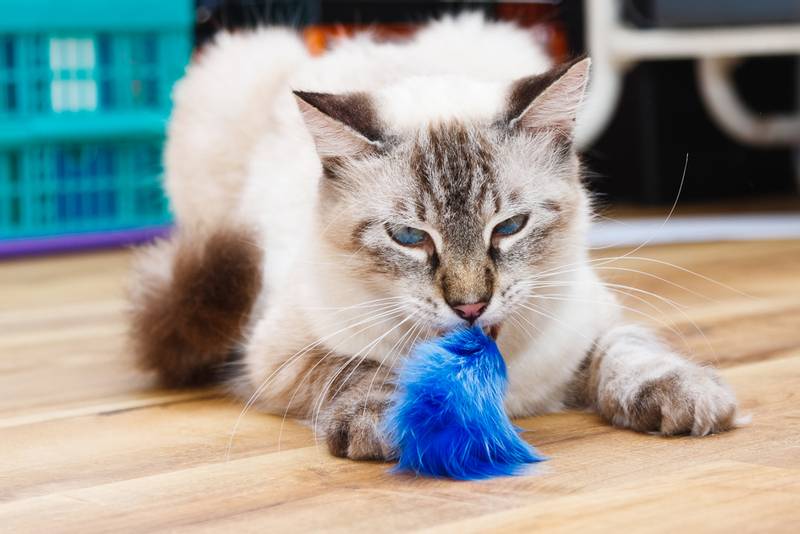
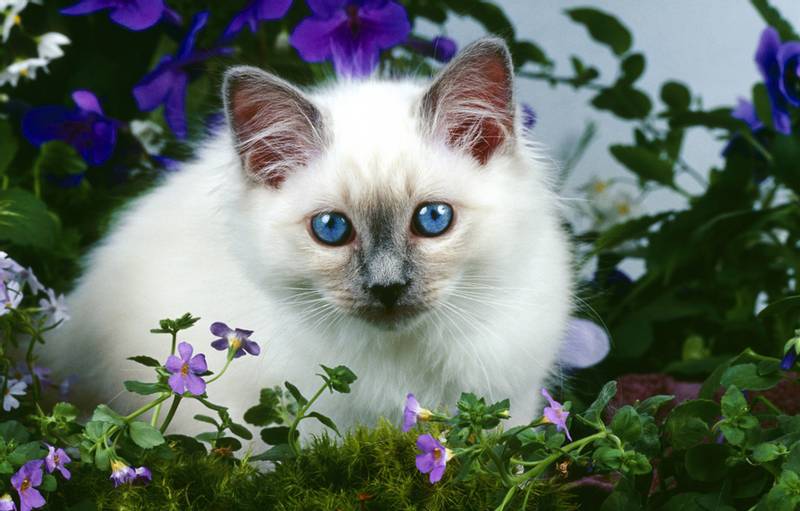
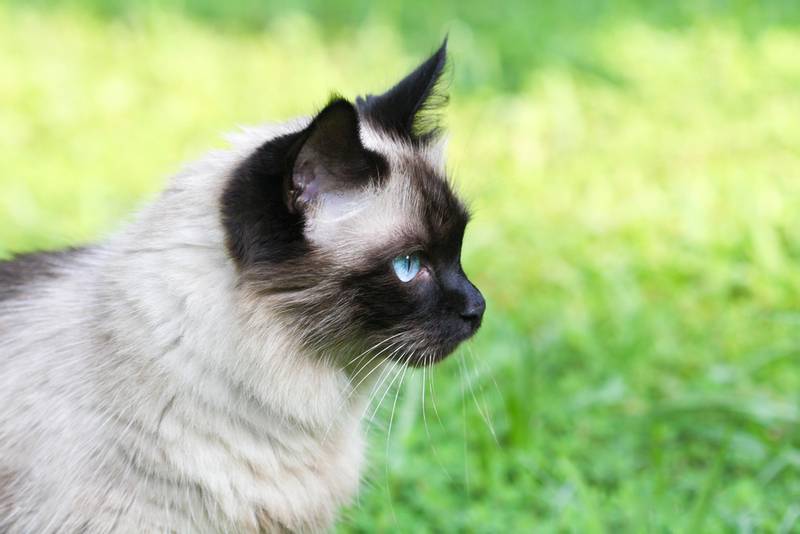
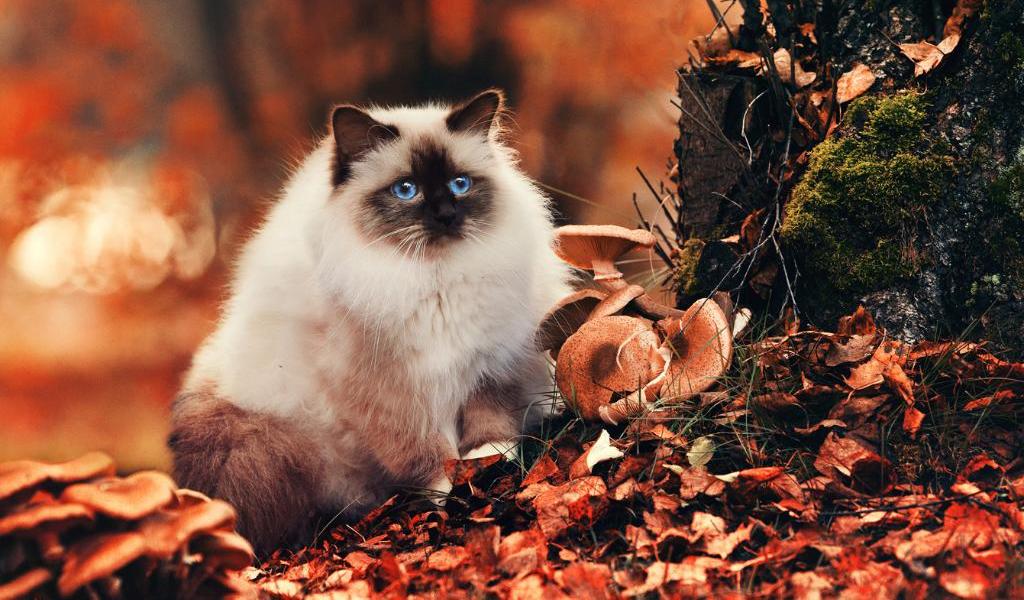
Birman cat, or Sacred Birman refers to very ancient breeds, fame for which came several centuries ago. Nowadays, being one of the most popular pets among all mustachioed and tailed ones, the mysterious Birman never ceases to amaze its owners, revealing more and more new facets of its character. Having once stopped your choice on a Birman cat, you can be sure of its correctness. Birman is obedient and gentle, with good, almost aristocratic manners. Sociability is combined in it with an expressive mind. Birman is friendly and very curious. When guests appear in the house, she easily makes contact, not at all afraid of new people. Representatives of this breed will especially please those who like to take cats in their arms and on their knees: you will not encounter resistance – rather the opposite.
History of the Birman cat breed
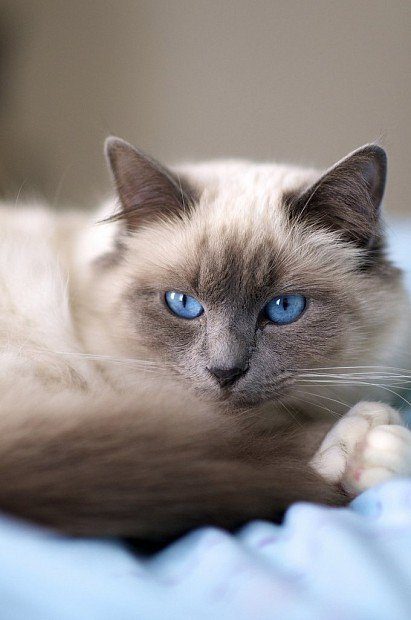
The name of the breed speaks of the historical homeland of these cats, the state of Birma in the west of the Indochina peninsula, which changed its name to Myanmar in 1989.
The first Birman cats arrived on the Old Continent in 1919. They were recognized as a separate breed in 1925 in France. During the Second World War, the genotype of the ancestors of modern Birman was practically lost. But as a result of selection and crossing with Siamese and Persian cats , the sacred Birman as we know it today became already by the middle of the last century.
The original history of the origin of the breed, that is, the period before the appearance in Europe, is rooted in the mists of time, and it is almost impossible to establish where these very smart and endowed with a special charm domestic animals came from. It is only known for certain that these cats in ancient times lived in Buddhist temples in Birma, protecting them from raids by robbers and protecting them from dark otherworldly forces.
A picturesque legend is connected with the history of the breed, taking us back to those distant times. In one of the mountain temples, Buddhist monks worshiped the blue-eyed goddess Cun Huanze. She was revered as a conductor of the souls of the dead to the afterlife. For some reason, some monks did not go to heaven after death and, according to legend, returned to the sinful earth in the form of a cat. When black and white cats with yellow eyes began to appear on the territory of the monastery, no one had any doubts: these were the messengers of Cun Huanze. Accordingly, they were treated with special respect.
One such cat named Singh took root with a senior monk named Mun Ha. From him, as the legend says, the Birman cat originated. One day, robbers raided the temple, wanting to profit from its riches and especially the statue of the blue-eyed goddess. The monks stood up to defend their monastery, but the forces were unequal. From the hands of the bandits, Mun Ha also died, falling tightly right at the feet of Cun Huanze. And then something incredible happened. Singh jumped down on the head of the deceased owner, his fur seemed to flare up, illuminating with a bright radiance. The robbers got scared, and the monks managed to drive them away. The faithful cat lay down next to the lifeless body of Mun Ha and did not leave for a whole week, after which he died.
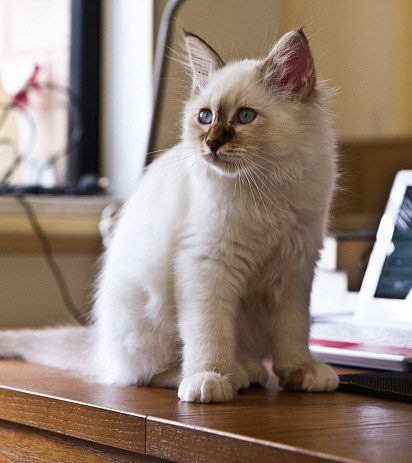
After these events, the appearance of the mustache-purring inhabitants of the monastery began to change dramatically. The yellow eyes turned bright blue, and the black and white fur took on a golden hue. A dark mask appeared on the muzzles, the tail and ears also darkened. Thanks to this legend, Birman cats began to be called sacred. It was believed that if you treat a representative of this breed badly, offend him, then such a person will be in trouble and he will be punished by higher powers.
For a long time this breed was known only in Birman itself and other states of Indochina. The rest of the world learned about it only at the beginning of the last century, when the millionaire Vanderbilt brought sacred Birman to France in 1919. He bought two kittens, paying fabulous money for them, but only one got to his new homeland. This individual is female and produced the first European Birman.
The breed was officially registered only in 1925, giving it a name according to legend – the sacred Birman. She immediately gained immense popularity in the secular circles of that time. Kittens were very, very expensive, and few could afford to buy them. Most likely, it was for this reason that during the Second World War the breed was threatened with extinction. By some miracle, the fans were able to keep one cat and one cat. Through the efforts of breeders, Birman survived and began to expand its population.
From the second half of the last century, the fluffy Birman goddess began to settle in other countries. In 1966, the first blue-eyed cats came to the United States, and they were brought to the UK a year later, in 1967.
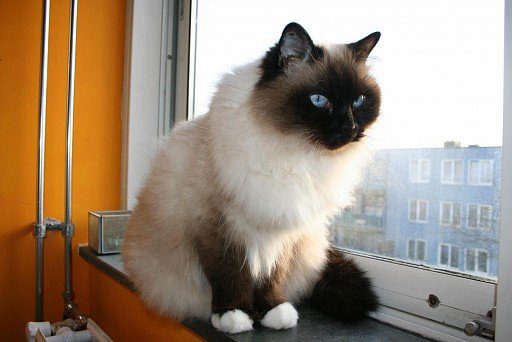
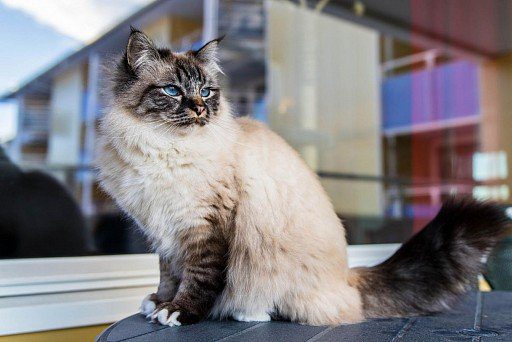
Video: Birman cat
Appearance of the Birman cat
Sacred Birman is a medium-sized cat whose coloration resembles that of her Siamese counterparts. Her fur is soft and delicate. Ideally, an individual of this breed has long and silky fur, and the color is color-point. A distinctive feature of the Birman, one might say, their calling card is bright blue eyes and white “socks” on their paws.
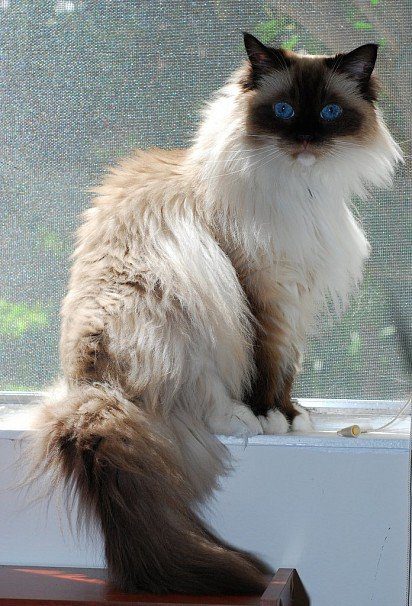
These cats are especially loved by those who are delighted with the color of the Siamese, but dislike the latter for their thin structure and wayward behavior. Fans of Himalayan cats also find an outlet in sacred Birma, but they do not love the latter for their short and squat body. The Birman cat is a real find in this regard, it is a kind of middle option, a kind of balance between these two breeds. And as a “bonus” the owners get her complaisant nature and accommodating.
Head
It is proportional to the Birman, almost round in shape, wide and expressive. The length somewhat exceeds the width; the forehead, against the background of a rather rounded skull, is somewhat convex.
The muzzle is well developed: wide, rounded, with full and prominent cheeks. She seems to be “hidden” under a dark mask. Cheekbones protrude. The chin is firm and strong.
The nose is of medium length, “Roman”, the transition (TICA) from the forehead to the muzzle is clearly defined (FIFe – no transition).
Birman cat Eyes
The eyes of the Birman cat are large, expressive, almost round in shape, set wide apart. Sapphire blue, their color can vary from light blue to dark blue. Dark eye color is preferred.BirmanThe eyes of the Birman cat are large, expressive, almost round in shape, set wide apart. Sapphire blue, their color can vary from light blue to dark blue. Dark eye color is preferred.
Ears
Located on the sides of the head, a slight forward inclination is noticeable. The size is medium, the tips are rounded. Can be placed both moderately and widely. The inner part of the auricle is expressively pubescent.
Neck
The neck of Birman cats is short or medium in length, muscular and wide.
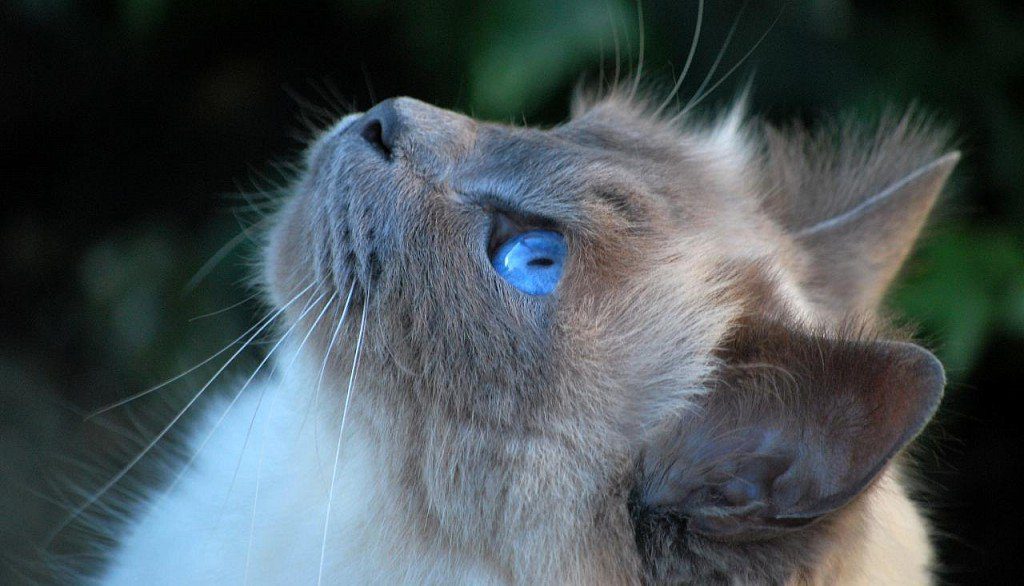
Body
Squat, elongated shape and dense constitution, with well developed and strong muscles. The bone structure is strong. The average weight of an adult Birman cat is about 6 kg.
Legs and paws
The legs are thick, strong, of medium length, muscular. Rings may appear on the legs with existing color variations. Large, strong and round paws, between the fingers – tufts of wool.
Tail
Fluffy, medium length, uniformly dark color. Fluffy tip. The Birman usually “carries” his tail up.
Birman cat Color
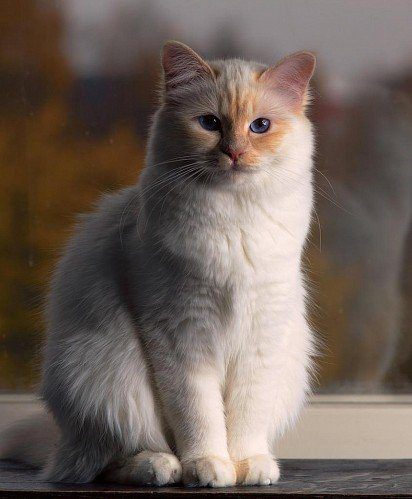
Birman cats are characterized by various variations of color points, these can be blue-gray and dark brown, red and chocolate, cream and lilac. The color of the rest of the coat can vary from white to cream.
Pigmentation, like in Siamese cats, is allowed only on the muzzle (the so-called “mask”), ears, limbs and tail. Another sign of the Birman are white paws, “shod” in “slippers” (or “socks”) – a stroke of white, without impurities, color on all four limbs.
On the paws, the hair is of a flawless white color and on the forelegs it does not rise above the pastern. On the hind legs, the “slippers” end with a sharp “spur”. It is located at a certain distance (1/2 or 1/3) between the hocks and the large pad of the paw. The color of the pads also varies, the following variations are allowed: pink, dark brown, coffee with milk, pink with dark spots, cinnamon.
Birman kittens are born with an immaculate white color. Marks and “socks” begin to appear after 1-2 months. The final color is established only in adults. Over the years, the coat darkens.
Possible vices
Eye color, far from the accepted standard. Silvery sheen in one or both eyes, strabismus. The presence of white or colored spots on the chest and abdomen, as well as the head, as in the Persians and Siamese. Irregular tail structure.
Disqualification vices
Absence of white “slippers” (“socks”), “spurs” and “gloves” and the presence of white patches on colored areas of wool.
Knotty or curved tail. Exceeding the “spurs” of the hock joint.
Spots where they should not be: colored – on light wool or “gloves”, white – on points. Colored spots on the paws.
Photo of Birman cats

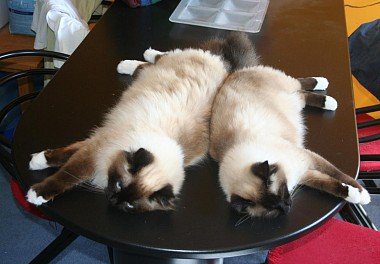
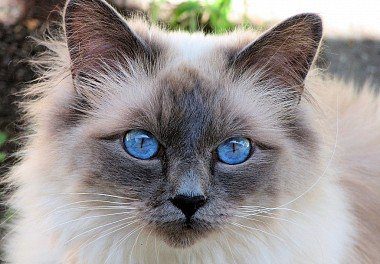
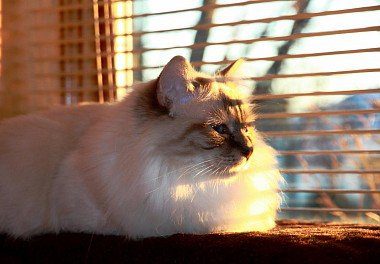
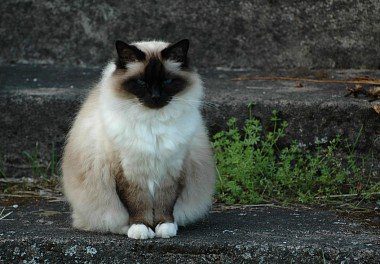

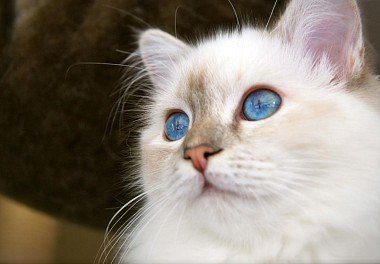
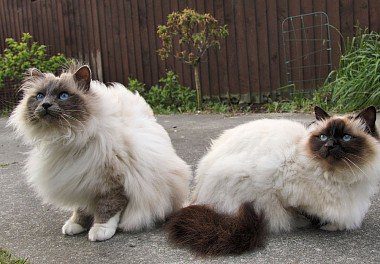

The nature of Birman cats
This graceful Asian beauty has an extraordinary mind and quick wit. It seems that she understands the owner almost perfectly. When someone is talking, the Birman carefully looks into the eyes, literally stares, as if he understands what it is about and even tries to catch the hidden meaning. Buddhist monks, who noticed this feature in cats of this breed, called them “the eye of heaven.”
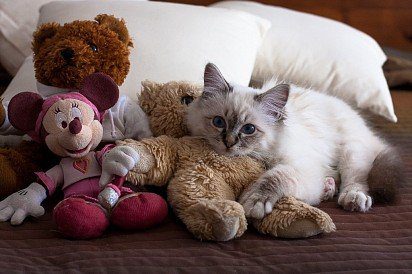
The nature of Birman cats, as they say, without extremes. Excessive passivity is not observed for them, but they also do not have too violent temperament. These pets are calm and balanced. Playfulness, friendliness and affection are the main features of the sacred Birman, for which she is loved. These wonderful qualities, oddly enough, are more pronounced in males, although it would seem that it should be the other way around. Playing with the owners, intelligent Birman cats in the heat of excitement will never scratch. The ability to “control oneself”, as a true sign of a noble breed, is clearly in their blood.
The Birman cat does not tolerate loneliness and does not distance itself from other animals in the house, it easily gets along with cats of other breeds and even dogs. But if the owner pays a little more attention to other pets, the Birman may become jealous. Representatives of this breed get along well with children, they play with them with pleasure. If the atmosphere suddenly heats up in the house and a scandal is brewing, the wise sacred Birman in some incomprehensible way can defuse the situation, making the household members smile and forget about quarrels.
At the same time, representatives of this breed have an independent character, and this independence manifests itself more and more clearly as they grow older. It seems that the famous writer Rudyard Kipling copied his “The Cat Who Walked by Himself” from them. If the Birman does not want to, you cannot keep him in the room by force. He loves to walk in the fresh air, indulge in games in the garden or in the garden, go outside.

Despite the fact that affection, playfulness and friendliness are the usual state of the Birman, they are characterized by frequent mood swings. They often exhibit traits such as excessive curiosity, excessive persistence, and at times extreme obsession. Achieving the goal by any means, the Birman cat sometimes gets angry with the owners, who, irritated, can offend her. In such cases, the Birman immediately changes mercy to anger – shows aggression. If you offend him very much, then he can leave such a master forever. Representatives of this breed also do not tolerate indifference to themselves.
In order to diversify the “leisure” of these animals and so that they feel that the owners are not indifferent to them and truly love them, it is necessary to create conditions for their full development from an early age. It would be nice to arrange a kind of “teremok” for them, where they could play and relax. Birman can be easily taught simple commands, to a specific place in the house and to the scratching post. They become attached to the owner tightly, but they endure long separation painlessly.
Despite such a trait as obsession, the Birman cat is not alien to tact. If she feels that the owner is not in the mood, she will not come up again for a portion of affection, but will wait for a more opportune moment.
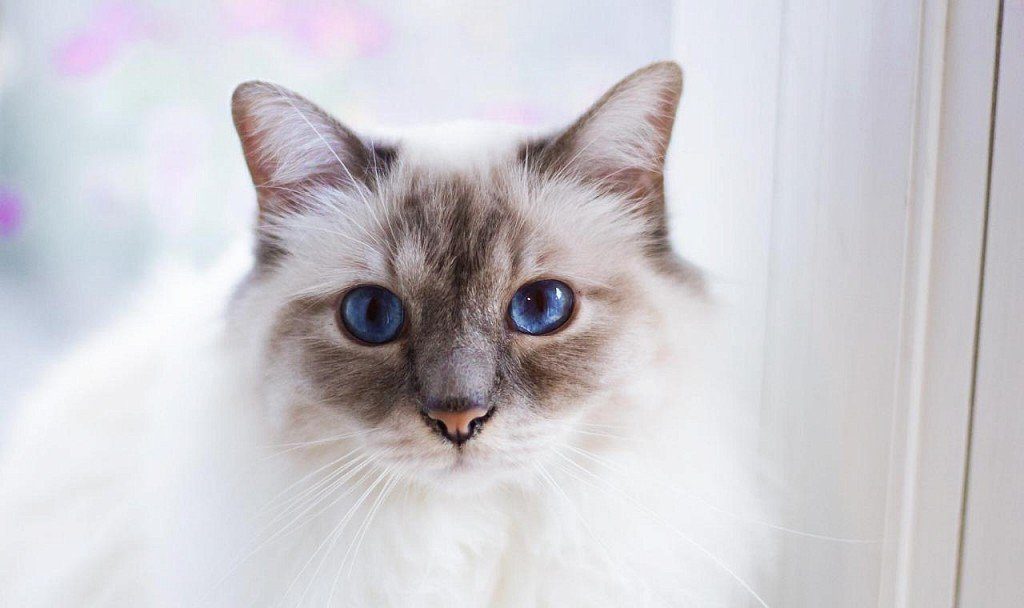
Birman cat Care and maintenance
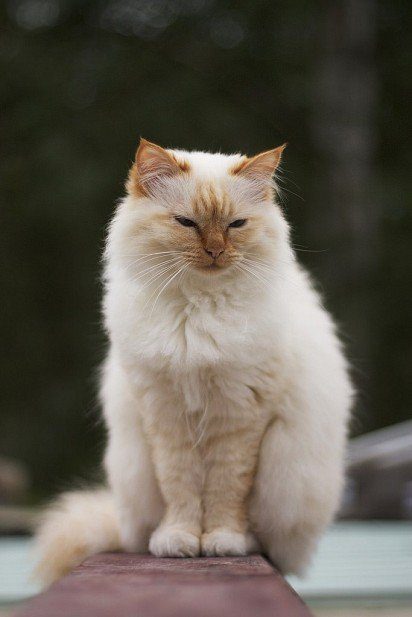
Myanmar is one of the hottest countries on our planet, so it is not surprising that its native is a very thermophilic animal that cannot stand drafts. We are used to the fact that ordinary domestic cats can sleep on a rug, in an armchair, but only a Birman cat prefers to sleep under a blanket. She is completely unsuited to life in the yard and on the street, especially in the cold season. Sacred Birman does not perceive precipitation either, it is frankly afraid of them.
The characteristic features of this breed are also manifested in the structure of the vestibular apparatus – its representatives do not land well. Therefore, if you let the cat out on the balcony, be sure to put a net on the window so that your pet does not fall down when, driven by natural curiosity, it begins to explore everything around.
The coat of Birman cats does not require special care. They do not have an undercoat, so it is enough to comb out with a special brush once every two weeks. Daily hair care is required only during the molting period – in order to avoid the formation of tangles on it. Ears also require simple hygiene procedures: it is enough to wipe their inner surface with a damp swab twice a month.
Bathing Birman cats is a different story. They do not like water procedures, so please be patient. Swimming passes quickly and without much nerves, only if the Birman is accustomed to it from an early age.
Feeding
The diet of Birman cats should be balanced. Unlike many people, they are not prone to food “addiction”. No matter how much food you leave for the Birman, she will eat exactly as much as she needs, without overeating. In addition, in addition to natural activity, they have a good metabolism, so overweight does not threaten them either at an early age or in adulthood.
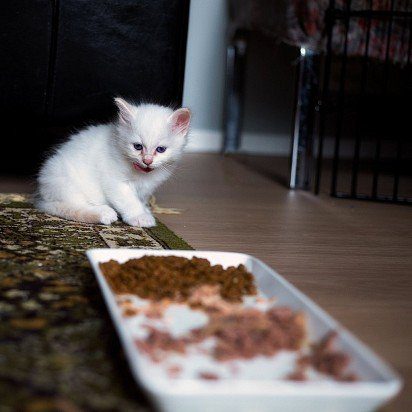
At the same time, our Indochinese aristocrat is a real gourmet, that is, she loves to eat deliciously. For her, it is not the quantity of food that matters, but the quality. Natural meat food is a top priority on her menu. If you treat your pet with turkey, beef or chicken, he will be very grateful to you and will respond with even more love. Some individuals are happy to eat boiled fish. But fatty meat and salty foods should be excluded from the diet of these cats, as this is fraught with their health: the kidneys and liver may suffer.
Many of us are accustomed to feeding pets food and dishes “from the table”, that is, the usual everyday food that the whole family eats. Sacred Birman cannot be given such food! Spicy and smoked foods should also not be included in her diet. You can add ready-made food to the menu, but only if it is a top quality product. Cheap food for your pet, of course, will not kill, but it can adversely affect the condition of his coat and skin, as well as the digestive tract.
The diet of small kittens should include low-fat chicken and ground beef, fermented milk products. Such a menu will be the key to maintaining the brightness of wool in adulthood. Babies, in order for them to fully develop, need to be fed 4-5 times a day, the serving size should not exceed 150 grams. Fermented milk products should also be given to adult cats, which is beneficial for their health. Elderly and old cats are usually fed twice a day, a single serving should be 200-250 grams.
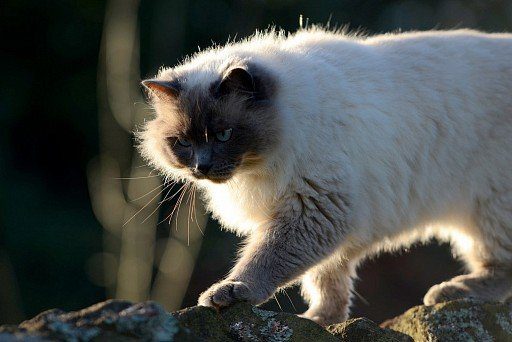
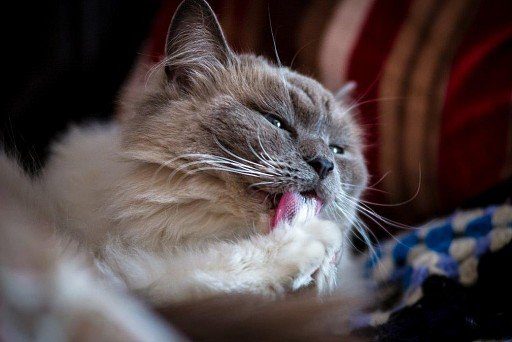
Health and disease of the Birman cat
Diseases of a hereditary and genetic nature in representatives of this breed are rare, and all thanks to careful selection. In general, the health of Birman cats is quite strong. By making it a rule to regularly visit the veterinarian for preventive examinations and routine vaccinations, you thereby guarantee your pet an active life and longevity.
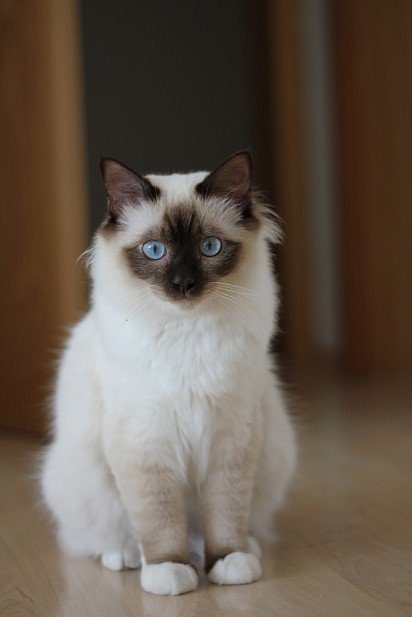
Birman life expectancy is 12 to 14 years. There are happy exceptions to this rule – for example, Lady Catalina’s cat. This representative of the Birman breed from Melbourne, Australia was born on March 11, 1977 and lived for 35 years, getting into the Guinness Book thanks to her longevity record. Birman cats are also distinguished by fertility, the number of kittens in one litter can reach 10. The fact is documented when a cat gave birth to 19 babies at once, and this is also a record.
In some cases, very rare, Birman suffer from a heart condition called hypertrophic cardiomyopathy. Its symptoms – shortness of breath and cough after active games, lethargy – usually begin to appear from an early age. Birman cats also have pathologies of the vestibular apparatus and corneal dermoids. The latter are successfully treated with a course of special antibiotics, but on condition that the disease is not started. As preventive measures, regular deworming and age-appropriate vaccinations are provided.
In order for a cat to grind its claws, it must be accustomed to a scratching post. Try to place a house or a bed for your pet low, since climbing almost to the ceiling is not the style of sacred Birman, it is a sedate animal. The bed should be made from natural materials, any “chemistry” can adversely affect the health of the Birman.
How to choose a Birman cat kitten
When buying a Birman kitten, and indeed any other breed, you want to be sure of its breed and health. Purchase from the hands or in online stores cannot guarantee this. The most reliable way not to make a mistake is to buy a kitten in a certified cattery. The owners of such establishments, as a rule, value their reputation, paying special attention to the health of kittens, their upbringing and social adaptation. Here your future pet will be vaccinated against infectious diseases and dewormed. Leaving the cattery, the kittens will come to your house already adapted, sociable, accustomed to the tray and scratching post.
Many, at their own peril and risk, still buy Birman kittens not in certified catteries or even from their hands. In this case, carefully examine the kitten. A baby who does not have health problems is usually cheerful and active, he has clear eyes, clean ears and a shiny thick coat. Ask if the kitten was vaccinated, if he has a veterinary passport, what the baby was fed with.
If you notice discharge from the nose or eyes, then it is better not to buy such a kitten – it is more expensive for yourself.
Photo of Birman kittens
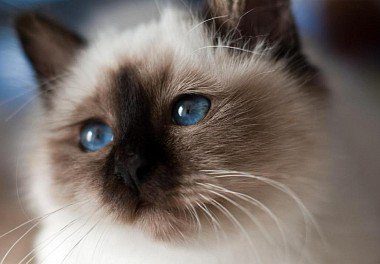
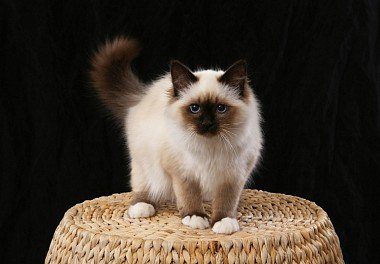
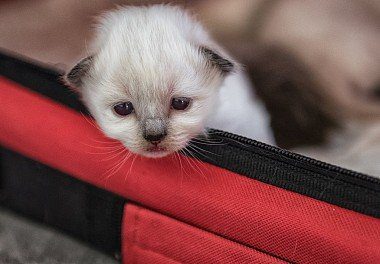
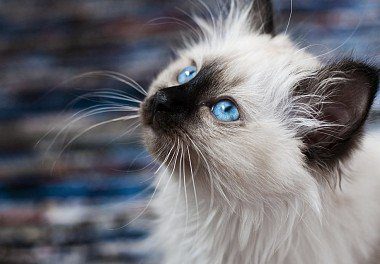
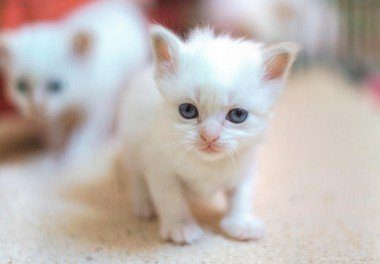
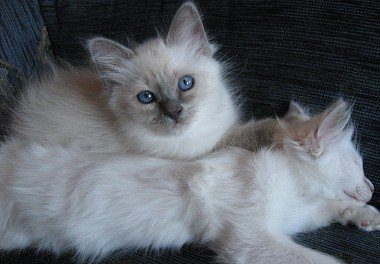
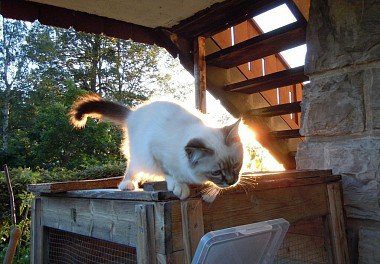
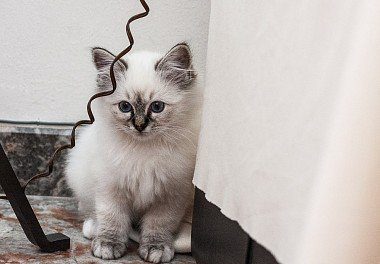
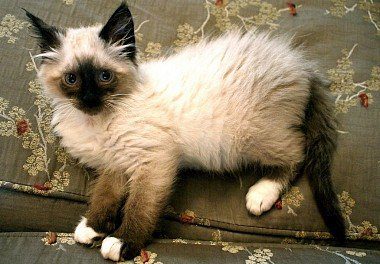
How much is a Birman cat
Catteries specializing in breeding Birman cats are very rare in Russia. Purchasing purebred kittens can cost a fortune. So, a show-class specimen will cost your wallet about 1100$. Brid-class is cheaper, about 1000$. Even cheaper, about 900$, a pet-class kitten will cost. A Birman kitten without accompanying documents can be purchased for only 150$. Such animals are usually born from unscheduled matings and, accordingly, will be without a pedigree.
It is not recommended to purchase kittens in bird markets, through dubious advertisements or from random persons. It is highly likely that such a Birman will have a bad heredity, and he will be with a whole bunch of diseases. Many connoisseurs of the breed, in order to save money, take such risks. To minimize them, when buying, pay attention to the general condition of the future pet. The kitten should be strong, not lethargic, with a thick shiny coat, without purulent discharge from the eyes and ears.
When all doubts are left behind, and you decide on a purchase that will ultimately turn out to be successful, be sure: from now on, next to you is a faithful friend for many years. Representatives of the Birman cat breed are very noble creatures, who invariably respond to attention and care with great love and devotion.



